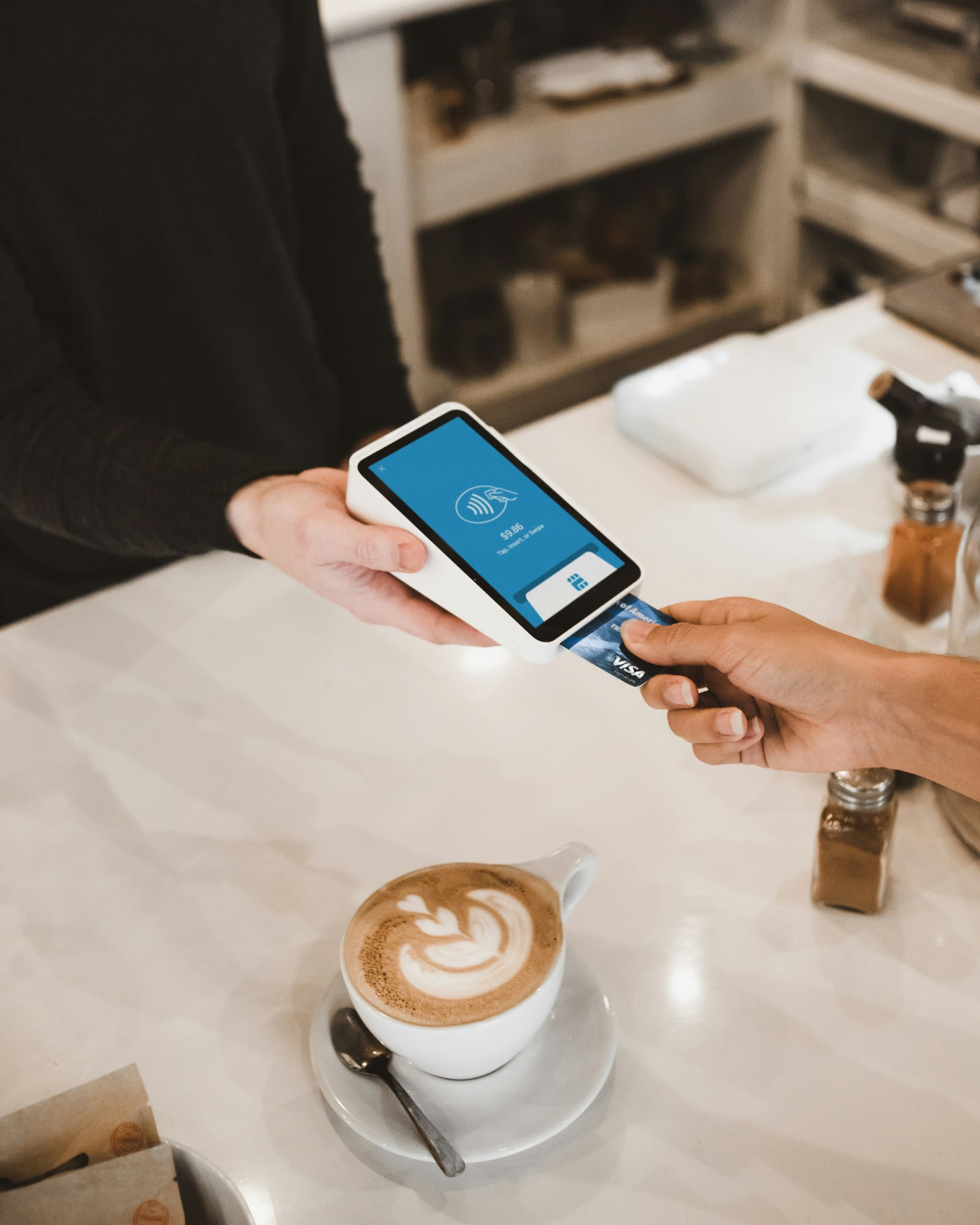True customer loyalty is essential for every ecommerce brand. And it’s earned through the experiences a customer has with your business over time. What makes it more valuable than short-term revenue is that a loyal customer will be your brand advocate, bring in customers, and always choose you over a competitor.
Contrary to popular belief, pay-to-join (paid) memberships are not the new loyalty programs. In fact, we are in a place where customers not only expect a brand to have a loyalty program but engage and get excited about the loyalty programs. So let’s compare the two retention tools and see how each stacks up when it comes to sustainable, authentic customer loyalty.
Key Takeaways:
- Paid memberships create customer expectations, not loyalty.
- You don’t address a wide range of customer needs and alienate some customers with paid memberships.
- Paid memberships don’t appeal to new shoppers.
- Customers are more likely to value something they’ve earned, and paid memberships bypass this.
- Paid memberships hinder long-term customer engagement.
Table of Contents:
- Loyalty programs vs paid memberships
- Why paid memberships don’t build true customer loyalty
- 1. Paid memberships segregate customers unfavorably
- 2. Paid memberships don’t appeal to new customers
- 3. Paid memberships limit the power of rewards
- Why loyalty programs are effective
- 1. Free to join programs are effective customer acquisition tools
- 2. Free to join loyalty program offer exclusivity to customers with VIP programs
- 3. Free to join loyalty programs use rewards to support the customer journey
Loyalty programs vs paid memberships
A loyalty program is a retention strategy that rewards customers who interact with your business through repeat purchases. Loyalty programs allow businesses to offer rewards, discounts, or other incentives as a way to acquire, engage, and, most importantly, retain customers. Simply, a loyalty program incentivizes customers to earn rewards.
Paid memberships are those that offer perks and benefits to customers up-front in exchange for a fee. Some of the most famous examples include Costco, Amazon Prime, and even streaming platforms, all giving you something of value in exchange for a recurring monthly or yearly fee.

Both can have the same desired goal—to build and retain a loyal customer base. However, they take different approaches and affect how customers perceive loyalty and their relationship with the brand.
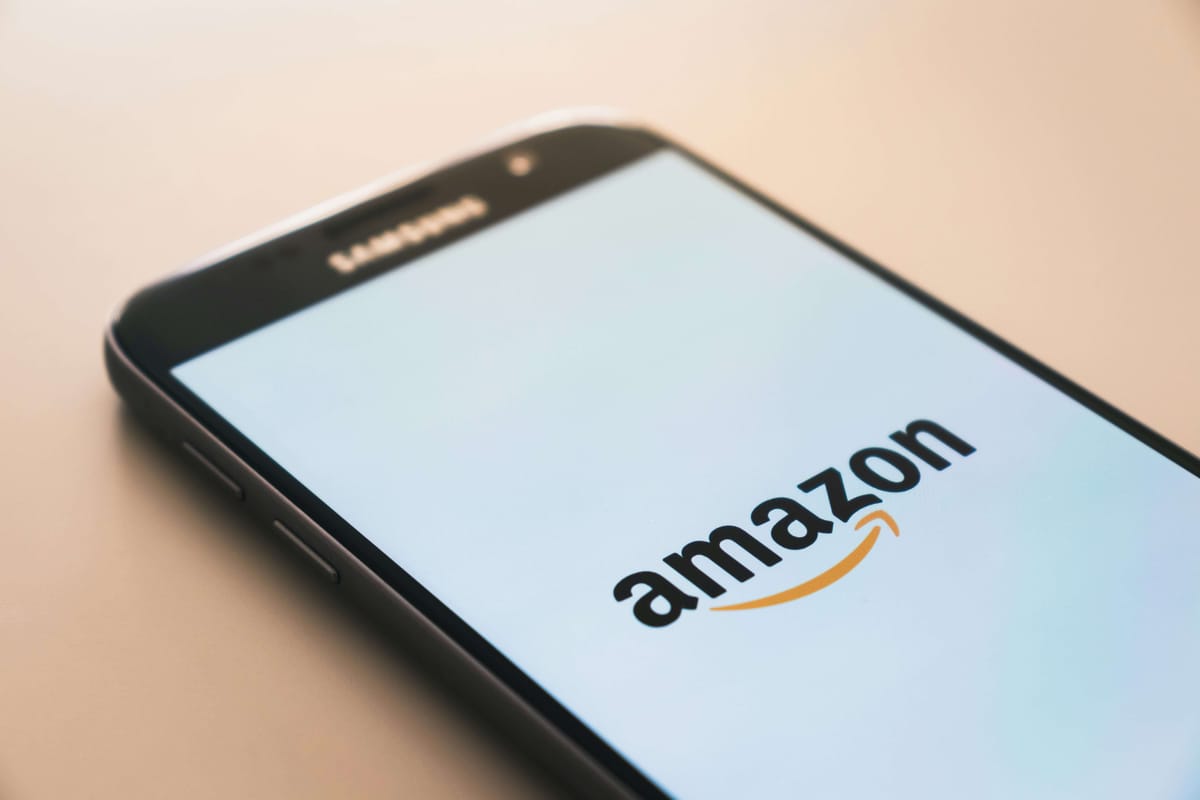
Why paid memberships don’t build true customer loyalty
Paid memberships might seem attractive in retaining customers with a positive ROI. Sure, you generate revenue up-front, but at what costs down the road?
One disadvantage is that customers will perceive your brand not with authentic loyalty but with expectation. If those expectations are not met, customers will leave for another service or product. In paid membership programs, there is less room for errors. Paid memberships segregate customers, don’t appeal to new customers, and limit your actual rewards.
1. Paid memberships segregate customers unfavorably
Right off the bat, it’s important to recognize that not all of your current customers will be interested in paying for a membership program. By choosing to charge customers for loyalty perks, you are limiting the reach of your brand’s customer loyalty by failing to appeal to a wide range of customer needs.
Only those who are already loyal to your brand will be willing to pay more for exclusive benefits. Not everyone purchases products as frequently as these top-tier customers, meaning access to exclusive benefits won’t necessarily be seen as valuable to other shoppers. This could lead to customers feeling left out, not motivated to take action and join your program, and generally misunderstood by your brand.
2. Paid memberships don’t appeal to new customers
Before committing to a subscription or membership service, customers need to know that they like the product or trust the brand. There’s a reason free trials are offered first. But even with a free trial, the simple truth is that paid memberships don’t appeal to new shoppers who don’t know if your brand or product is worth a repeat purchase.
Paid memberships don’t appeal to new customers because customers first have to give something up, such as a recurring charge. Membership programs have a higher barrier to entry, which leads to lower engagement rates across your customer base. Sure, you can have revenue up front, but repeat purchase rates will dwindle. And the opportunity to increase average order values (AOV) will dwindle as well. Not to mention, you’ll also run the risk of high churn rates when customers cancel their membership after getting the value they need.
3. Paid memberships limit the power of rewards
While some brands choose to have free loyalty programs and paid memberships, paid memberships limit the power of a rewards program. Motivation is one of the most powerful psychological factors at play in any rewards program. When you reward customers for completing actions at your store, you encourage customer behaviors that keep customers engaged. When customers are rewarded for engaging at your store, they’re more likely to enjoy your overall brand experience and thus build loyalty.
Paid memberships hinder any customer from taking action with the brand. There is no goal to work towards for customers. No incentive to return. Customers have already paid the price to join, and it quickly becomes a sunk cost. Rewards give customers a burst of dopamine when picking out a reward they "worked for," whether it's a discount, free shipping, or a free product.
Did you know that people are willing to pay more for things that are self-made than things they’re given for free? This phenomenon is known as “the IKEA effect” and is related to the idea that customers always experience more pride in things they’ve built themselves.
In pay-to-join programs, customers are not required to work for the rewards they’re receiving. Instead, they’re instantly gratified and can begin taking advantage of rewards immediately. This instant gratification removes the power of positive reinforcement from the rewards program in question. Which is why earned loyalty is much more valuable and effective. Think of the major brands with loyalty programs, such as Starbucks and Sephora; people really value earned loyalty benefits.
As a result, rewards that have been paid for become less of a luxury for customers to receive. Instead, they are expected and quickly become the new norm. For real emotional loyalty to be encouraged, customers need the opportunity to invest in a program with their time, emotion, and finances.
Why loyalty programs are effective
The sole purpose of a loyalty program is to turn one-time customers into repeat customers and build a loyal following. Loyalty programs are a common part of ecommerce strategies in every industry, and have been proven to retain customers.
Based on our data at Smile.io of a sample size of 139 million orders analyzed, we discovered that 35% of an ecommerce store’s revenue is generated by the top 5% of customers. This means your loyal base of returning customers drives revenue.
In addition, we have found that shoppers using Smile.io coupons via redeeming a reward have a 3.3x higher purchase frequency than those using no Smile.io coupons.

Free-to-join loyalty programs are a major incentive for a new customer to make their first purchase and return to your store in the future. In this case, new customers can not only begin earning points for their purchases immediately, but you’ve also captured their valuable loyalty from the start — something a pay-to-join membership program can easily fail to do.
1. Free to join programs are effective customer acquisition tools
Having a free-to-join loyalty program is one of the easiest ways to convert first-time site visitors into loyal customers. For these shoppers, the promise of points for each purchase and qualifying action means that they are receiving more value per dollar than they would without rewards program membership—all at no extra cost.
To incentivize these sign-ups, ecommerce brands offer introductory points for program registration. By giving your first-time shoppers a little bonus for creating an account, you give them a reason to shop with you again. Smile Rewards loyalty program participants have a repeat purchase rate 56% higher than non-participants.
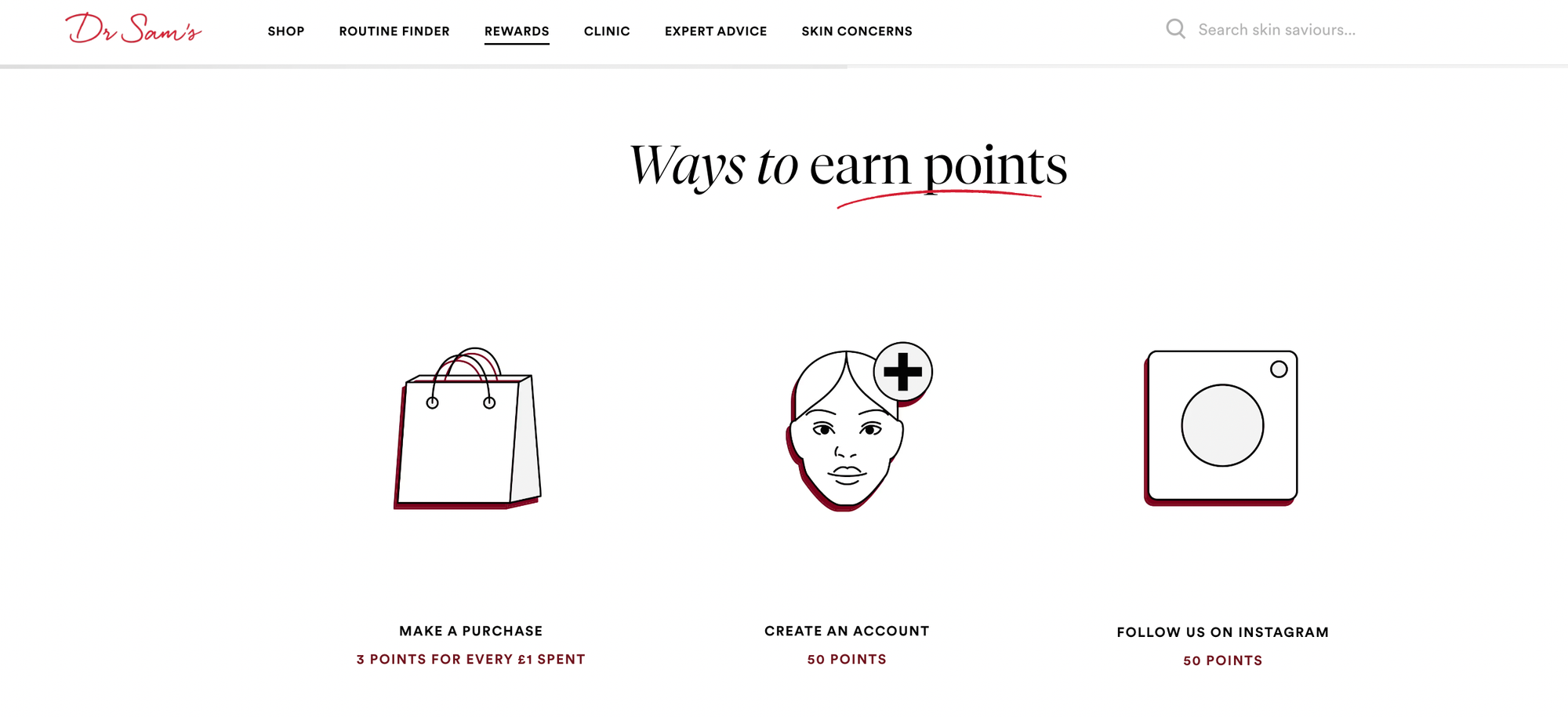
Dr. Sam’s offers 50 points for customers signing up for its loyalty program, which can be used to redeem some exclusive benefits. In addition to these immediate benefits, a free rewards program presents an incredible opportunity to capture valuable customer information. With each program sign-up, you are collecting customer information that will be crucial to both your retention and acquisition marketing initiatives in the future.
It’s no surprise we preach the retention rates a branded loyalty program offers. We have seen it work time and time again. We also have the data to back it up—Dr. Sam’s achieved a 98.71% redemption rate in its first week with Smile.io.

2. Free to join loyalty program offer exclusivity to customers with VIP programs
Who said exclusive benefits can only come with a membership fee? By working VIP program tiers into your reward program strategy, you can emulate that same feeling of exclusivity without making your customers pay a fee. With a VIP program, your best rewards are saved for your best customers, meaning there is more incentive for your entire customer base to work their way up.
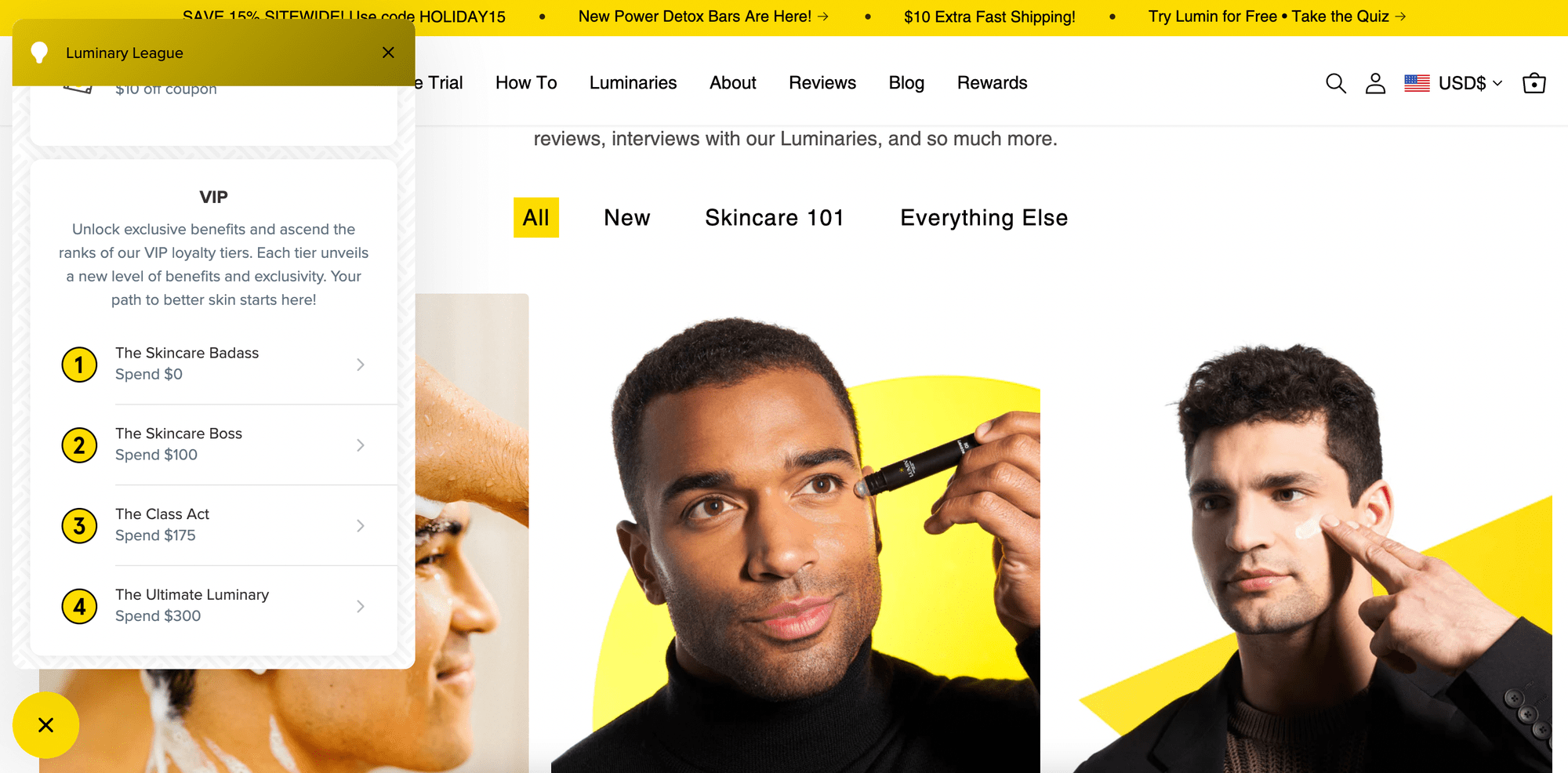
Men’s skincare brand Lumin appropriately names its loyalty and rewards program, The Luminary League, and its currency, Lumin Coins. With 4 VIP tiers, Lumin has curated an experience at each level.
The benefits increase as you ascend the VIP tiers. At the highest tier, you can unlock additional benefits like free shipping, products, and early access to new products. Each tier has unique perks to incentivize customers to unlock those tiers. For example, members of The Ultimate Luminary get exclusive benefits like 2x points on purchases, an annual gift, and more.
Offering tiers that every customer can work towards makes your loyalty program more accessible and inclusive. Especially when you consider a VIP program has no barrier to entry into that first tier. Whether your goals are money spent, number of successful referrals, or number of loyalty points, customers who achieve them will be more committed to your store than if they had paid to receive the same benefit.
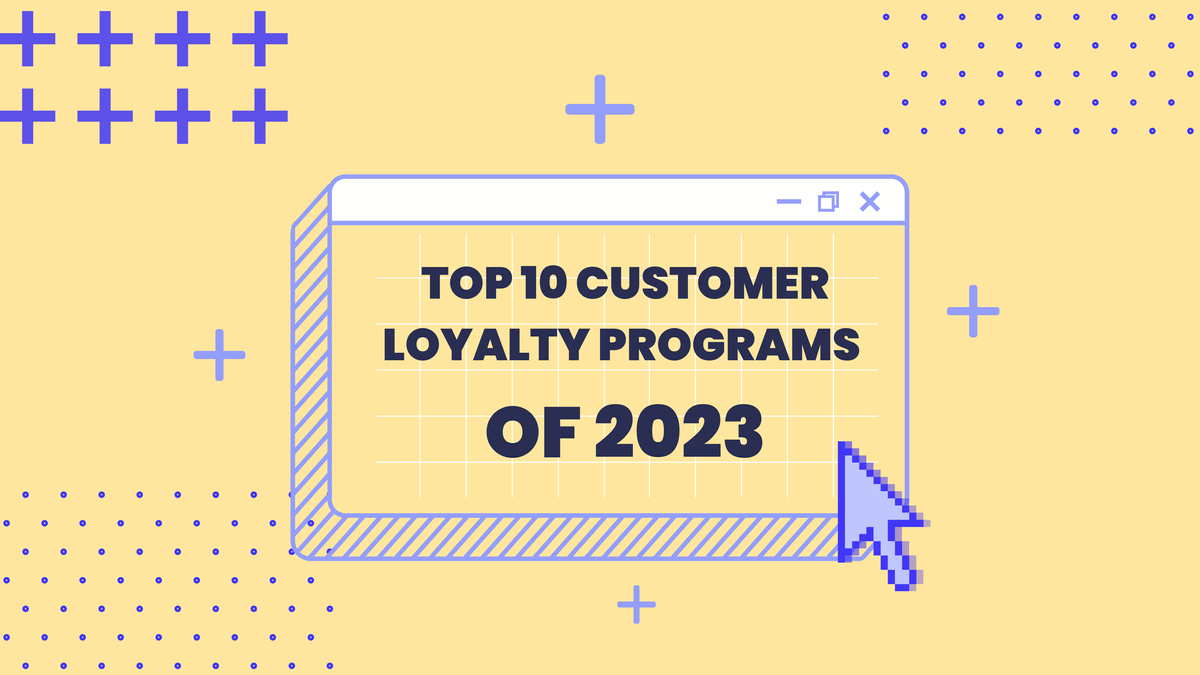
3. Free to join loyalty programs use rewards to support the customer journey
One of the most critical things that free-to-join loyalty programs succeed in is motivating customers to move along the customer journey with relevant rewards.
For example, a program that offers points for completing a variety of actions makes rewards seem a lot more attainable. This is immediately more appealing to a first-time shopper. If you are offered points for registration or following a brand on social media, these are easy steps to take to move toward your next reward. In a free-to-join loyalty program, rewards like these can be customized for each stage of the customer journey. Paid membership programs, on the other hand, only offer value to a select set of customers with pre-existing loyalty.
In these ways, the versatility of free programs allows businesses to meet a variety of customer needs all at the same time.
Fee or Free?
While both free loyalty programs and fee-based membership programs have their pros and cons, the choice of which program your business runs is up to you. The simple goal with both is to earn repeat purchases. But with free-to-join loyalty programs, you have a higher chance of attracting customers that will become your brand community and always choose you over a competitor.




